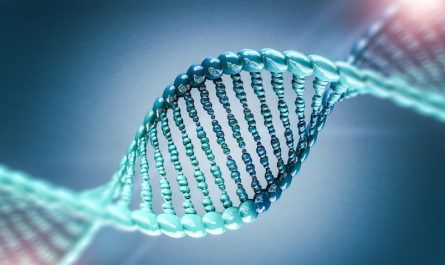Spatial omics refers to a group of emerging technologies that allow researchers to study biological molecules such as DNA, RNA, proteins or metabolites within their spatial contexts in tissues or single cells. By preserving the spatial organization of biomolecules, spatial omics techniques provide insights into complex biological processes and systems that are otherwise difficult to decipher using conventional bulk assays. In this article, we will discuss some commonly used spatial omics methods and how they are transforming our understanding of cell biology.
Spatial Transcriptomics
One of the pioneers of the spatial omics field is spatial transcriptomics which enables gene expression analysis with cellular resolution in tissue samples. Using arrays of oligonucleotides printed on slides, spatial transcriptomics captures and sequences RNA molecules from discrete locations in a tissue slice, generating thousands of ‘spots’ each representing gene expression data from a small tissue area. When combined with computational techniques, spatial transcriptomics builds up a comprehensive gene expression map of the entire tissue. This has been used to characterize tumor heterogeneity, identify novel cell types and trace developmental trajectories in diverse tissues. The high-throughput nature and precision of spatial transcriptomics is revolutionizing our view of gene regulation in complex in vivo environments.
Imaging Mass Cytometry
While spatial transcriptomics provides a top-down view of gene expression, imaging mass cytometry offers a bottom-up perspective by directly visualizing the abundance and localization of proteins in tissues. It utilizes mass cytometry, a single-cell analysis technique, to mark biomarkers in intact tissue sections with heavy metal isotopic tags followed by raster scan imaging using time-of-flight mass spectrometry. This allows simultaneous detection of over 40 markers per tissue spot at sub-cellular resolution. Imaging mass cytometry has found applications in mapping tumor microenvironments, studying neurodegenerative diseases and providing phenotypic characterization of diverse cell types in normal tissues. The comprehensive protein profiling capabilities at microscopic scale offers unprecedented insights into protein organization and function in situ.
Fluorescence In Situ Hybridization
As one of the earliest spatial techniques, fluorescence in situ hybridization or FISH employs fluorescent DNA probes to detect specific nucleic acid sequences in morphologically preserved cells and tissues. Combined with microscopy, FISH allows direct visualization of DNA sequences, gene mutations and chromosomal abnormalities within the native cellular context. Advanced multiplexed FISH now permits detection of several genes or chromosomal loci simultaneously with different color probes. Applications of FISH include detecting gene fusions in cancers, analyzing chromosome aberrations in genetic diseases and elucidating three-dimensional genome architecture. Recent expansion to RNA FISH has enabled investigations of transcription dynamics and non-coding RNA functions inside cells and organisms.
Multiplexed Ion Beam Imaging
Multiplexed ion beam imaging (MIBI) is an emerging imaging mass cytometry approach capable of high-plex protein detection with single-cell resolution in intact tissues. In MIBI, metal-isotope tagged antibodies target proteins of interest which are then sputtered off tissue sections using a quartz crystal microbalance and detected using time-of-flight mass spectrometry. MIBI provides spatial protein distribution maps across entire tissue sections at sub-micron resolution while maintaining 40-50 marker multiplexing. It has enabled epitope-level mapping of lymphocyte subsets and tumor-associated macrophages in human tissues. The ultrasensitive detection and superb imaging capabilities of MIBI make it a powerful platform for spatial proteomics and systems immunology studies.
Single-cell Techniques Extending to Spatial Applications
The last few years have seen explosive developments in single-cell profiling technologies that are increasingly being adapted to extract spatially-resolved information. For example, newer versions of single-cell RNA-sequencing like Slide-seq and Sco-seq employ barcoded beads or oligonucleotides printed on slides to profile thousands of spatially-barcoded cells from tissue sections, generating transcriptomic atlases. Similarly, techniques like Rahnamamin et al. have coupled indexed antibodies with cyclic immunofluorescence to map 40+ proteins across mouse brain slices at single-cell resolution. Additionally, mass cytometry can be applied to image immune cells within human tissues. These emerging spatial applications harness the multiplexing power of cutting-edge single-cell technologies to fill crucial gaps in our understanding of cell heterogeneity and intercellular interactions in tissues.
spatial omics represents a powerful approach to tackling biological complexity. By integrating positional information with high-dimensional molecular profiling, these techniques are revealing new insights into fundamental processes such as embryonic development, tissue homeostasis, disease pathogenesis and response to therapies. As spatial methods continue to scale up in terms of markers analyzed, tissue coverage and computational analyses, they hold promise to revolutionize our comprehension of multicellular systems. Going forward, spatial omics also pose interesting analytical and technological challenges that when addressed can further enhance their utility and advance precision medicine goals.



